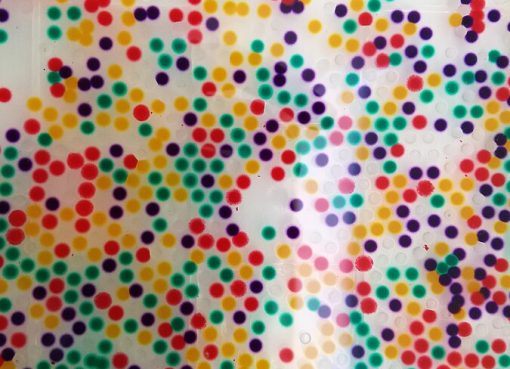Manoj Kumar Kalita1, Jitu Moni Das1 Raju Kr. Dewry2 and G. Kadirvel2
1Lakhimpur College of Veterinary Science, Assam Agricultural University, Joyhing, North Lakhimpur- 787051
2Division of Animal and Fishery Sciences, ICAR Research Complex for NEH Region, Umiam, Barapani, Meghalaya- 793103
Email id: manoj.k.kalita@aau.ac.in
Introduction
Nitrogen is an inorganic material that is marketed in the largest quantity in the world (by volume). In scientific and technical establishments, nitrogen is typically employed as a cryogenic liquid. Domestic animal sperm is one of the biological elements that can be maintained in liquid nitrogen gas for an extended period of time. This is accomplished with the help of a specifically built cylinder. Spare nitrogen gas is also stored in storage tanks, which can be either pressurized or non-pressurized. The cylinder in which semen straws are stored is usually an unpressurized one. The semen straws are taken from these cylinders as needed and used following proper procedures.
Liquid Nitrogen Cylinder
It resembles a large thermos flask in its appearance. It is made out of a two-layer jacket. A robust metal makes up the outer layer. Aluminium is employed in the majority of cases. Because of its modest weight, it is the ideal option. It is frequently painted with polyurethane to protect it from environmental damage. It has a reputation of extending a cell’s life. Inside the two-layered jacket, a vacuum is created. A high-quality heat insulator is also used in this jacket where the heat insulator and the vacuum aid in preventing evaporation of liquid nitrogen. The temperature inside the cylinder is -320 degrees Fahrenheit due to the presence of liquid nitrogen. Because of the vacuum, this temperature can be maintained until the liquid nitrogen level inside the cylinder remains 2-3 inches in depth. When the liquid nitrogen content in the cylinder falls below this threshold, the temperature within the cylinder rapidly rises; this is harmful to the semen stored inside.
The structure of the liquid nitrogen cylinder is built in such a way that the gas can be safely kept for 6 to 9 months. Despite these technological advancements, if the cylinder is not handled with extreme caution, the inner jacket can be irreversibly destroyed. This stratum is prone to cracking. In such cylinders, liquid nitrogen cannot be held for very long period. Hence, the following precautions should be taken to extend the life of a liquid nitrogen cylinder.
- The cylinder should be stored in a clean, dry location. It should never be placed directly on the floor, particularly if it is wet. It is preferable to place it on top of a wooden plank.
- It should be stored in a cool, dark place away from direct sunlight. Although the space should be sufficiently ventilated, the airflow should be limited. The nitrogen level in the air will rise if the room is closed on all sides and the cylinder is left open for an extended period of time or frequently uncapped. It may cause respiratory difficulties.
- It should be kept out of reach of children at all times. At the same time, it must be kept under the close supervision of a expert. The expert should be able to monitor the liquid nitrogen level in the cylinder on a regular basis.
- If the cylinder’s exterior covering becomes damp or contaminated with dung, caustic material or anything else that could damage it; hence, it should be removed promptly. Clean water can also be used to wash it.
- Whenever the cylinder is moved from one location to another, it should be kept in the upright position. It is usually preferable to secure the assistance of another person. Always try to avoid jerks that come out of nowhere.
- It is preferable to avoid bringing the liquid nitrogen cylinder into a lift (elevator).
- At the neck tube, the cylinder’s inner jacket is linked to the outer layer. When the cylinder undergoes a jerky or swinging movement, or when it is hurled from a height, this neck tube is easily damaged. The suction inside the cylinder may be lost as a result of this. As a result, the cylinder’s ability to hold nitrogen in a liquid condition for longer periods of time is reduced.
- When the cylinder cap is removed, make sure to return it to its original position as quickly as feasible. If the cylinder is left open without a cap for an extended period of time, the whole contents of the cylinder can evaporate. The entire cargo of semen straws will be spoiled as a result of this.
- The caps of various cylinders should be distinguishable. It’s not a good idea to mix them up.
- The rate at which liquid nitrogen evaporates will determine the cylinder’s life and the current state. On the other hand, it depends on how the cylinder is handled. When the cylinder is opened frequently at short intervals, the gas evaporates faster. During travel, the liquid nitrogen is constantly agitated, resulting in quicker loss. As a result, weekly checks on the liquid nitrogen level in the cylinder are required.
- The cylinder’s top or neck tube should not contain an excessive amount of ice flakes. If an excessive amount of ice crystals form inside the neck region, it indicates that the cylinder’s vacuum mechanism has failed. The damaged cylinder is incapable of storing liquid nitrogen for an extended period of time. A flattened wooden rod should be used to verify the amount of liquid nitrogen in the cylinder under such circumstances. If there is still enough gas in the cylinder, the entire load of semen straws should be transferred to another gas-filled regular cylinder right away. If the liquid nitrogen level is too low, the semen straws should be inspected for quality before being used again.
- A wooden rod (measure) should always be used when checking the level of liquid nitrogen in the cylinder. When submerged in liquid nitrogen, the plastic measure becomes brittle and readily breaks.
Few things to keep in mind while using LN2 gas
The presence of nitrogen in the atmosphere is undetectable to the human nose. As a result, when working with liquid nitrogen gas, more caution is required. A few precautions for averting disasters are mentioned below.
- Liquid nitrogen is a colourless, odourless and combustible gas. At normal atmospheric pressure, nitrogen is a liquid between 63 K and 77.2 K (-346°F and -320.44°F). It begins to boil at -196 °C at normal atmospheric pressure. When boiling begins, a large amount of gaseous vapour is produced. White coloured clouds form over the lid of a liquid nitrogen bottle whenever it is uncapped. Water vapour in the surrounding environment condenses to form cloud, not nitrogen gas.
- Only appropriate containers should be used to hold liquid nitrogen.
- When liquid nitrogen is being transferred from a primary cylinder (storage tank) to a cylinder meant for holding semen straws, make sure the cylinder has some liquid nitrogen in it. Its temperature may be excessively high if it is fully empty or if the transfer is being made for the first time. Because liquid nitrogen expands quickly at relatively higher temperatures, spillage may occur during the transfer. It’s a good idea to let the container cool for a while before filling it.
- When dealing with liquid nitrogen, it is usually a good idea to use PPE (safety glasses, latex gloves, a protective face shield, and protective vests). Even if only working for a few minutes or with a little amount of liquid nitrogen, it should never be taken lightly.
- When liquid nitrogen-extracted sperm straws are thawed at room temperature, they can explode. Hence, proper practices for eye protection should be followed.
- Neither dustbins nor sink drains should be used to dispose of unused liquid nitrogen. These constructions are not capable of withstanding cryogenic temperatures. They get readily cracked.
- The transmission of liquid nitrogen should be done slowly. This will reduce any tension that may arise as a result of the inner layer of the cylinder expanding and contracting.
- When transferring liquid nitrogen, never use a funnel.
- Before going through the transfer procedure, it is a good idea to take off your watch, rings or any other such items.
- Any object that has been immersed in liquid nitrogen should never be handled with bare hands. It has the potential to produce frost bite. The temperature of liquid nitrogen is too low. It has the potential to cause skin tissue to freeze. The skin is peeled off when the thing is dragged away.
- Nitrogen gas is not toxic in and of itself. However, in a closed area, its higher concentration may induce a fall in oxygen levels. When oxygen levels fall below 19.5 percent, breathing becomes difficult.
LN2 Emergencies: First Aid
- Nitrogen inhalation might result in nausea, vomiting and unconsciousness. If someone becomes unconscious, they should be transferred to a well-ventilated environment right away. Oxygen can be provided if inhalation is problematic. Until the doctor arrives, the affected individual should be kept warm.
- Pour enough of warm water over the spilled area to bring it back to normal temperature. Clothes and other items should be removed as soon as possible. It’s also a good idea to keep the affected area submerged in warm water (42 °C). It should not be massaged at any time.
- If LN2 comes into contact with your eyes accidentally, flush them with plenty of clean, warm water.
References
Dalton, J. (2008) Tips for Semen Storage and Handling, University of Idaho Caldwell Research Extension Center, Hereford World: 39, www.hereford.org
Freeman, M.; Whitney, J.B.; VerMilyea, M.D.; Jones, A.; Aguirre, M.; Leisinger, C.; Adaniya, G.; Synder, N.; Chilton, R. and Behnke E.J. (2019). Comprehensive assessment of cryogenic storage risk and quality management concerns: best practice guidelines for ART labs. J. Assist. Reprod. Genet. 36 (1): 5–14.




